Today I finally decided to fix up the Tandberg keyboard that I’ve been holding onto for some time now.
The board in question is a Tandberg TDV 5010, part of the 50XX series. The 5010 is the only model where the surplus keys are covered by blanks.
The blanked keys still work and output random letters from the QWERTY-layout upon contact.
The other two models, the 5000 and 5020, instead have dedicated keycaps for the NOTIS text system, developed by Norsk Data.
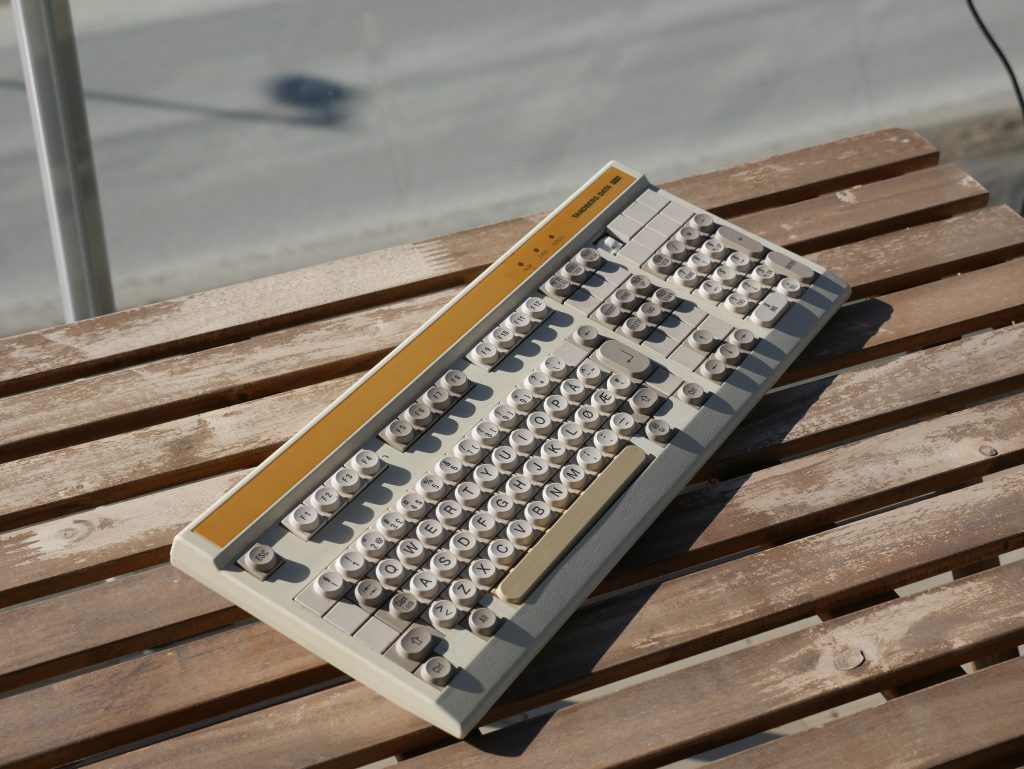
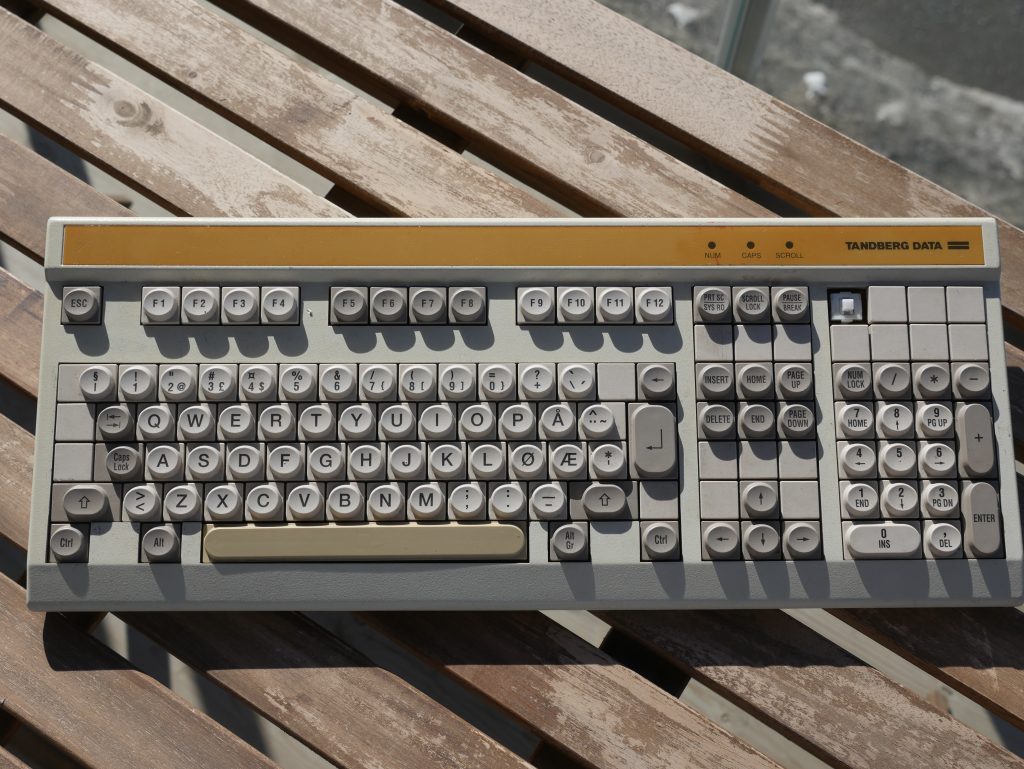
The keyboard itself didn’t look too bad, but it had some scuff marks along with a couple of non-working keys which made it rather hard to type with.
Although it appears clean from the outside, the keys hide decades worth of dust.

Yuck!
The first step was to look at the bad keys. The space-bar did not appear to function, and the culprit turned out to be a broken solder joint on the key switch.
I proceeded with scraping off some of the PCB to expose some more copper, and affixed the switch properly with hot glue. Easy!
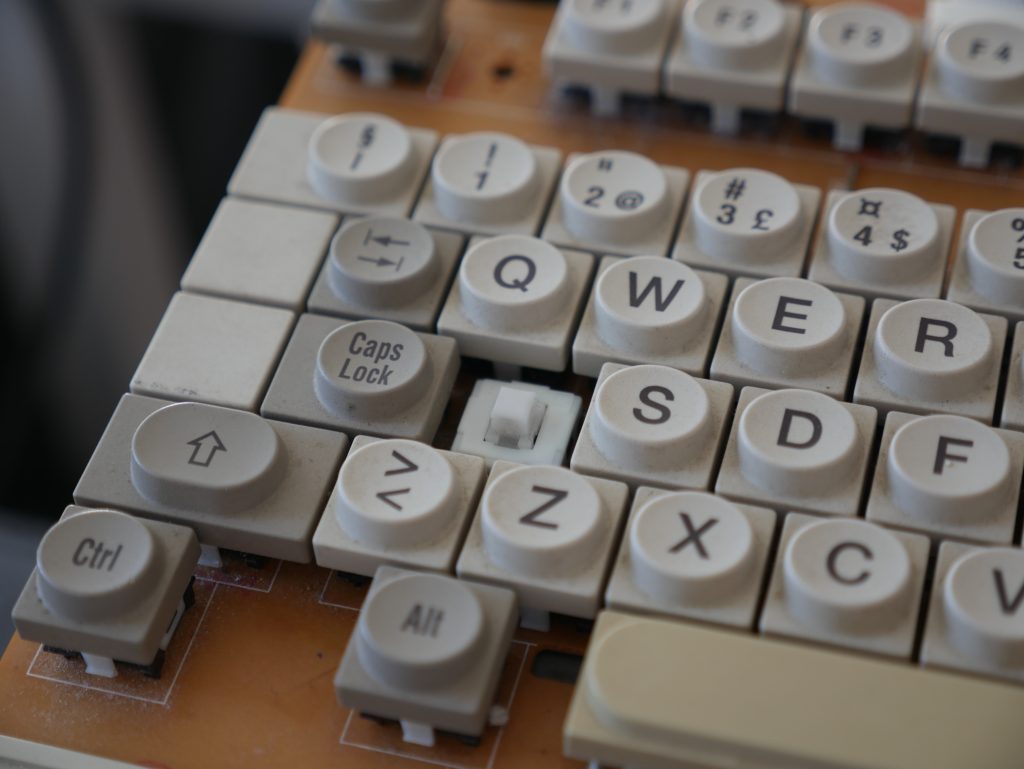
The next key in question was the ‘A’-key. The traces connected to the keyswitch looked all good, and upon resoldering it, the key seemed to work again.
However, upon testing the keyboard I found that the key missed a lot of key presses. I swapped the switch with one of the other blanked keys, and sure enough, it worked again.
Below is a couple of pictures of the switches used in these boards, which are Siemens STB 21 switches (click the link to learn more about them)
They feel a bit like Cherry MX Brows, though with a more noticeable tactile feedback.


The next task was to clean the PCB itself.
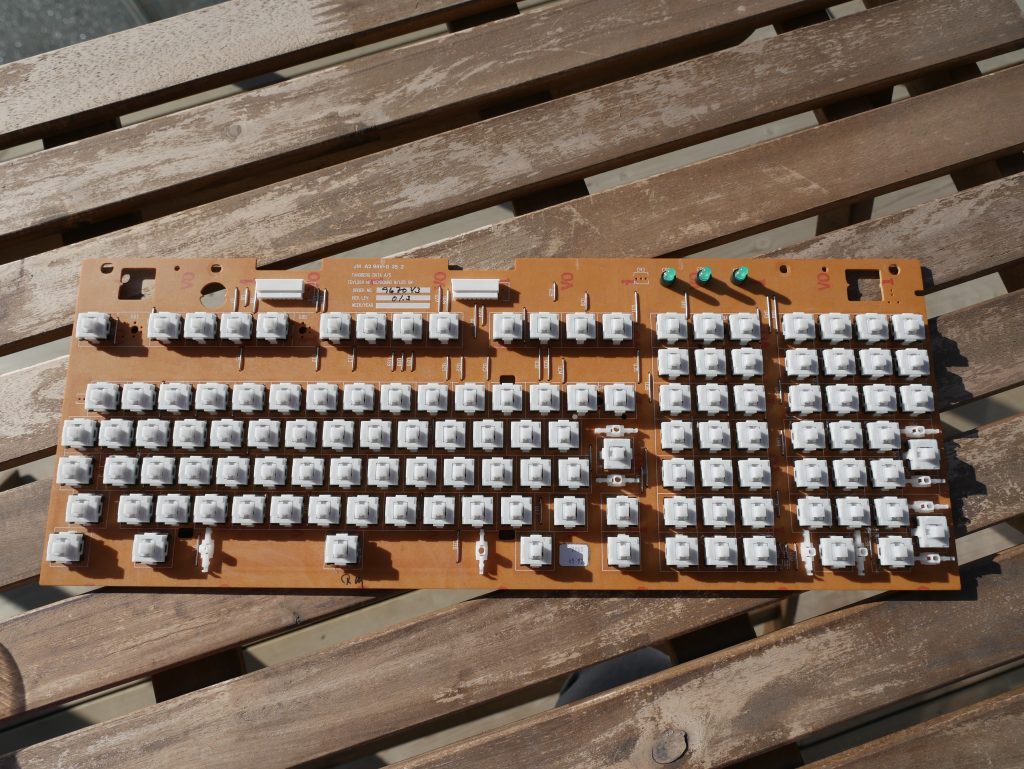
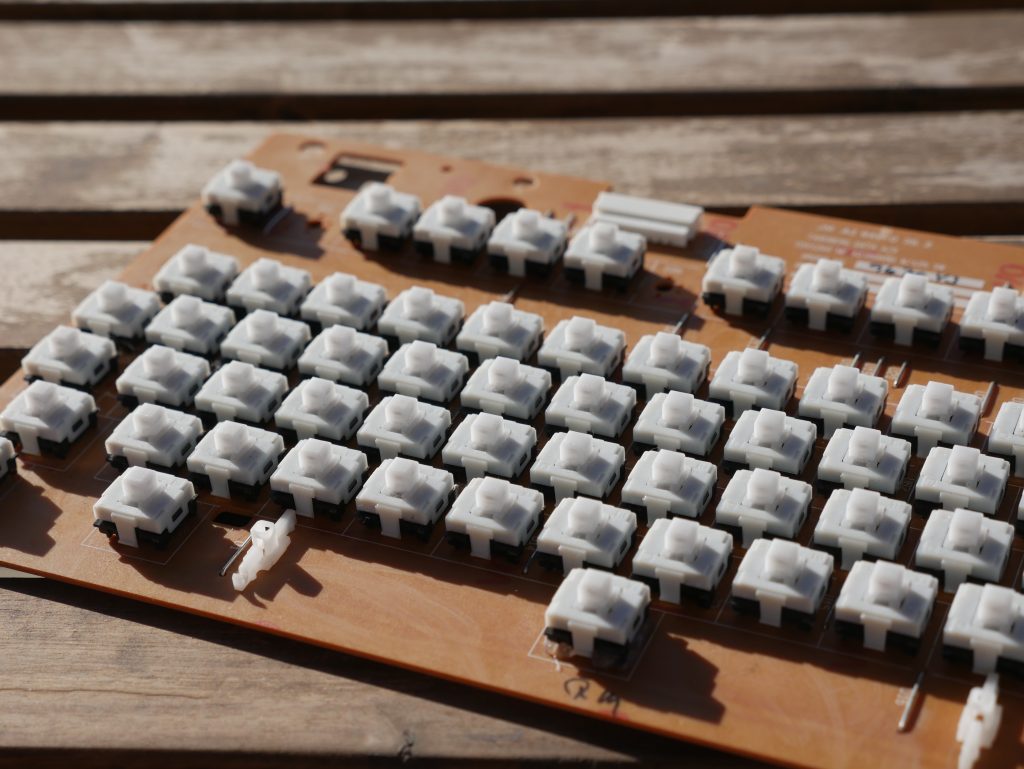
After a couple of rounds with cotton swaps soaked in rubbing alcohol, the PCB now looks a lot better.
Although I could have taken the time to remove every switch and clean it thoroughly, I was happy with how it turned out with my minimal effort
The next part was cleaning the keycaps.
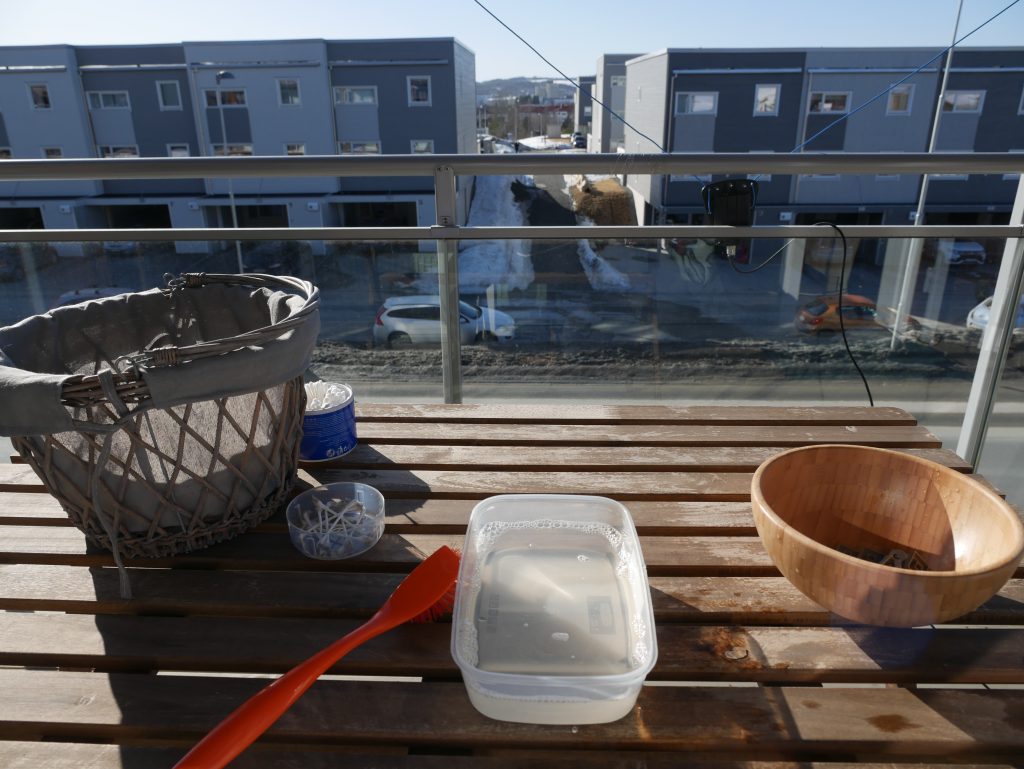
When I clean keyboards I like to be thorough as to remove as much dirt as I can.
To clean every key properly, I scrub them one by one with dishwasher soap.
This can really get tiresome, but the end result is worth it every time.

After scrubbing them, I rinsed off the soap using a pasta-tool (sorry, I don’t know what this thing is called)
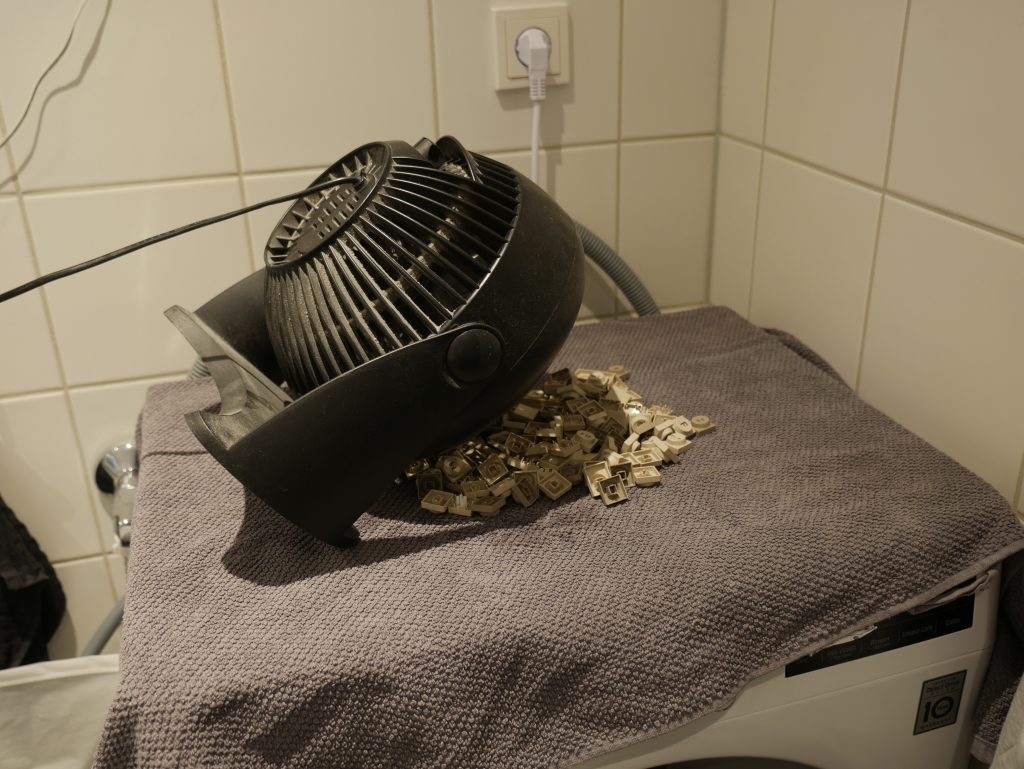
Afterwards, I put them all on a blanket to dry and pointed my fan at them. Notice the funky way of using the cable for keeping the fan at an angle.
When all the keys were dry, I carefully replaced all the keys on the PCB and assembled the keyboard back together.
The top frame was also wiped off with a grease remover, along with rubbing alcohol to remove the worst scuffs.
This is the end result.
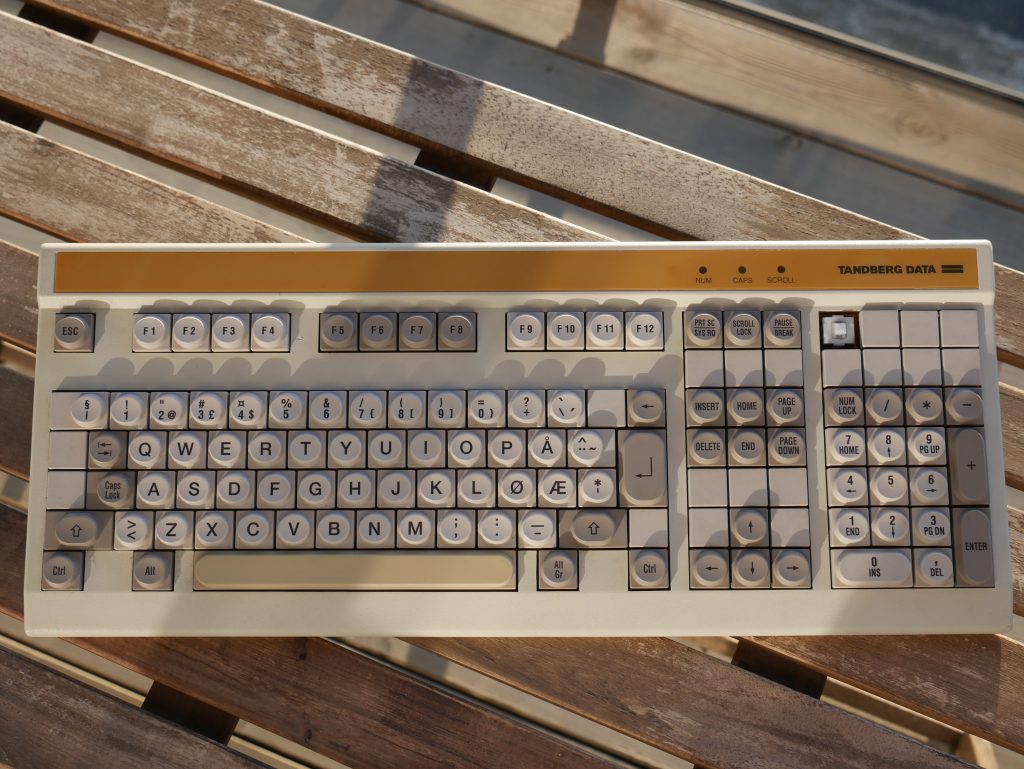
Although it might not seem like much of an improvement, the keys are definitely more comfortable to type with, in addition to all the removed dirt.
I also removed some pen marks found in various places on the board (so much for writing my name on it 10 years ago)
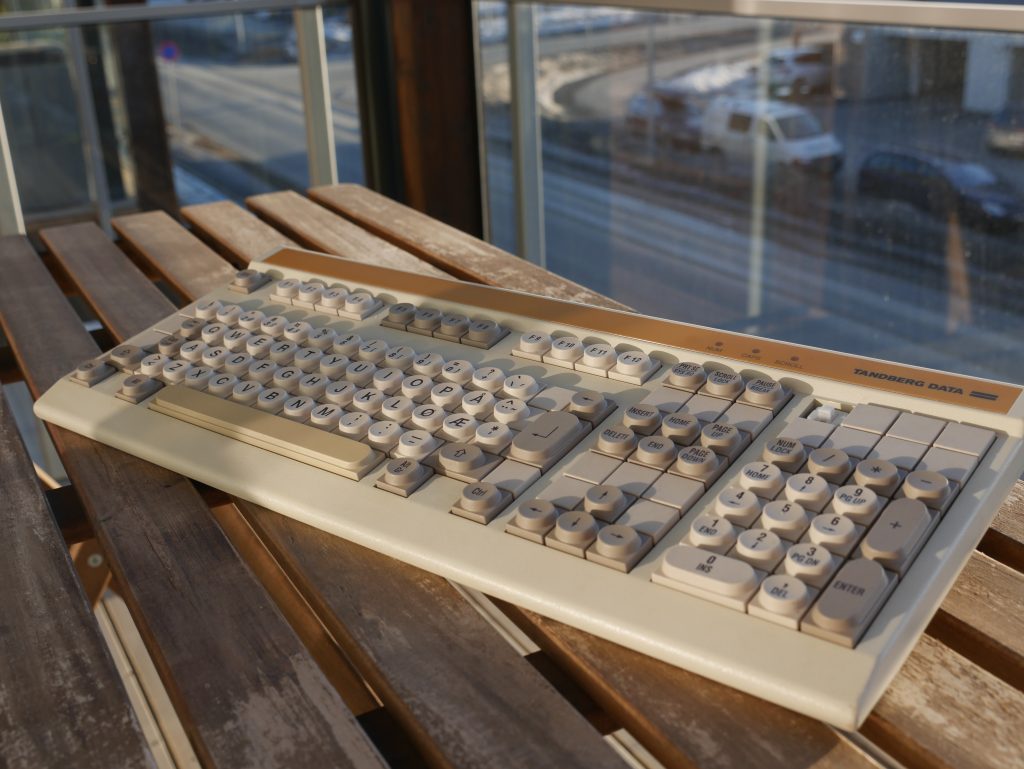
For now, this thing can continue towards another 30 years of service (or dust collecting, who knows..?)
Congratulations to your board, looks splendid after the wash. It’s interesting that it’s got the old-style ochre-coloured logo bar but the new-style PBT caps on its Siemens switches. Do you think you could post photos of the label on the back of the keyboard and of the controller board?
Are you able to use the keyboard on a PC? I have two 5000 keyboards, but they are not recognized by my PC when I connect them.
Best regards,
Terje
Yes – I think it depends on the original firmware that was written on them. This one was probably manufactured for a “modern” ish computer with native PS/2 support, which is why I can sucessfully use it with a USB-PS/2 adapter.
Best keyboard I have ever used. I think I still have it lying around somewhere – I hope. Don’t know which model I have. The only thing that made me stop using it was the lack of modern function keys and the PS/2 cable (detachable if I remember correctly, with a 5-pin DIN AT contact on the keyboard) . I’d love to have a modern keyboard with switches with that tactile feeling and sturdiness. No clattering, no doubt – and really comfortable keykaps.
What is the modern equivalent of this?
I have been able to make a patch for the original firmware, adding support for modern keys on the NOTIS-keys. Those will now give you up to F24, as well as GUI-keys and some media-keys. All you need is a way to program an 8051-compatible, and maybe some extra keycaps for the extra keys if originally hidden.
Check it out here: https://inhale.ed.ntnu.no/tdv_5000_patch.zip
Hello, how do i write the patch to Intel 8751? what i need to have?
The tools you need is more or less the same you need for working with EPROM chips. You need a chip-programmer that supports the 8751 or 87C51, and the computer program for the chip-programmer. You may also need an EPROM-eraser to erase the chip before programming, if it has been used before.
Many EPROM-programmers will support one or both of the 8751 and 87C51, but please check in advance before getting chips. For example, the TL866II Plus programmer (which is fairly easy to get hold of) supports 87C51 only and not the 8751.
Otherwise the process is identical to writing EPROMs, and there’s plenty of guides on how to program those elsewhere on the net.
Website unfortunately went offline, but in case anyone needs it I put the source code for the patch on GitHub:
https://github.com/Frodevan/TDV-5010_Firmware/tree/patch